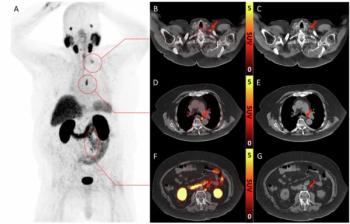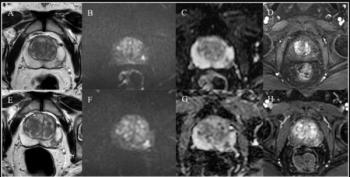
MRI Shows Different Breast Cancer Characteristics Among Younger Women
Magnetic resonance images reveal characteristics of breast cancer can differ depending on age.
Magnetic resonance imaging demonstrated morphological features of breast cancer independently associated with younger age, according to an article published online in the journal
In order to determine differences in breast cancer between women younger and older than 35 years, researchers from Korea retrospectively evaluated and compared MR images and clinicopathological characteristics of invasive breast cancer in the two groups.
A total of 270 invasive breast cancers in 266 premenopausal women who underwent preoperative breast MRI and curative surgery between 2009 and 2013 were identified. Fifty-six women were younger than age 35, 214 were between 35 and 45 years old.
The results showed that women in the younger group had more positive axillary lymph nodes, higher histologic grade, negative estrogen receptor (ER), negative progesterone receptor (PR) and higher p53 and Ki-67 expression compared to the older group.
Magnetic resonance imaging showed that the younger women were also more likely to display a round/oval or lobular mass shape, a smooth mass margin and high signal intensity on T2-weighted images when compared to the older group. Also, independently associated with the younger group were higher positive axillary nodal status, higher expression of p53, lobular mass shape and smooth mass margin.
The researchers concluded that “MR morphologic features, including lobular mass shape and smooth mass margin, were independently associated with breast cancer in young women, in addition to positive axillary nodal status and higher p53 expression status.”
Newsletter
Stay at the forefront of radiology with the Diagnostic Imaging newsletter, delivering the latest news, clinical insights, and imaging advancements for today’s radiologists.



























